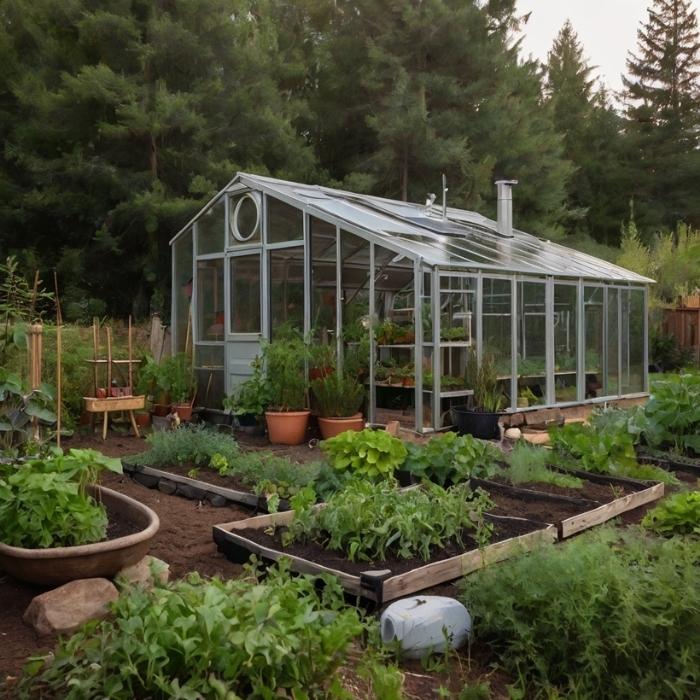Off-Grid Homesteading: Embrace Sustainable Living
Off-grid homesteading is a lifestyle that blends self-reliance, sustainability, and a deep connection to nature. As more people seek freedom from modern dependencies and rising utility costs, this way of living has gained significant popularity. Homesteaders embrace independence by generating their own electricity, sourcing water, and growing food—all while minimizing their environmental footprint.
Living off the grid offers numerous benefits, including reduced expenses, increased self-sufficiency, and a closer relationship with the land. Whether you’re considering off-grid living to escape the hustle and bustle of city life or to contribute to a greener planet, this guide will inspire and prepare you for the journey.
Explore the essentials of off-grid homesteading, from setting up solar panels to cultivating a thriving garden, and discover how this lifestyle can lead to a simpler, more fulfilling existence. Dive into the world of self-sufficiency and learn how you, too, can embrace the rewarding challenges of going off the grid.
Understanding Off-Grid Homesteading
Off-grid homesteading is a lifestyle choice that emphasizes self-sufficiency and independence from public utilities. This approach to living allows individuals and families to cultivate a sustainable way of life, often in remote locations where traditional utility services are unavailable or impractical. The concept of being “off-grid” traditionally refers to not being connected to the electrical grid, but it also encompasses water, gas, and sewage systems. This lifestyle is appealing to those looking to reduce their environmental footprint, lower living costs, and reconnect with nature.
What is Off-Grid Living?
At its core, off-grid living means creating a home that is not reliant on municipal services. This can involve generating your own electricity through solar panels, wind turbines, or other renewable sources. Water can be sourced from rainwater collection systems or wells, while waste management might include composting toilets or septic systems. The goal is to establish a self-sufficient household that can thrive independently of external resources12.
The Homesteading Connection
Homesteading complements off-grid living by focusing on broader aspects of self-sufficiency. It includes growing your own food, raising livestock, and developing skills for crafting and repairing items without relying on store-bought products. While homesteading can exist independently of off-grid living, the two concepts often overlap; many homesteaders aim to live off-grid as part of their self-sufficiency journey28.
Benefits of Off-Grid Homesteading
- Environmental Impact: By utilizing renewable energy sources and sustainable practices, off-grid homesteaders significantly reduce their carbon footprint.
- Cost Savings: Eliminating reliance on utility companies can lead to substantial savings over time, especially as energy prices continue to rise.
- Self-Reliance: Living off-grid fosters a sense of independence and resilience, as individuals learn to rely on their own skills and resources.
- Connection with Nature: Many off-grid homesteaders report a deeper connection to their environment and a more fulfilling lifestyle.
Getting Started with Off-Grid Homesteading
Transitioning to an off-grid lifestyle requires careful planning and consideration. Here are some steps to help you begin your journey:
1. Choose Your Location Wisely
Selecting the right piece of land is crucial for successful off-grid living. Look for areas with access to natural resources like water sources and fertile soil for gardening.
2. Plan Your Energy Needs
Determine how much energy you will need and explore options for renewable energy systems such as solar panels or wind turbines. Investing in energy-efficient appliances can also help reduce your overall consumption.
3. Water Collection and Management
Establish a reliable water source through rainwater harvesting or drilling a well. Implement filtration systems to ensure your water is safe for consumption.
4. Grow Your Own Food
Start a garden with a variety of fruits and vegetables suited for your climate. Consider companion planting techniques to maximize yield and reduce pests naturally.
5. Learn Essential Skills
Develop skills in areas such as gardening, animal husbandry, carpentry, and food preservation. These skills will be invaluable in maintaining your homestead38.
Challenges of Off-Grid Living
While the benefits are significant, off-grid homesteading also presents its challenges:
- Initial Investment: Setting up an off-grid home can require substantial upfront costs for land, building materials, and renewable energy systems.
- Maintenance: Off-grid systems require regular maintenance and troubleshooting; understanding how these systems work is essential.
- Isolation: Living in remote areas may lead to feelings of isolation; it’s important to build a community or network with like-minded individuals.
Conclusion
Off-grid homesteading represents a profound shift towards self-sufficiency and sustainability. By embracing this lifestyle, individuals can cultivate a deeper connection with nature while reducing their reliance on modern utilities. Whether you choose to go fully off-grid or adopt some aspects of this lifestyle into your daily routine, the journey towards self-reliance can be both rewarding and transformative456.For those intrigued by the idea of living off the grid, starting small with manageable projects can ease the transition without overwhelming you. Remember that every step taken towards self-sufficiency is a step towards greater independence and fulfillment in life

